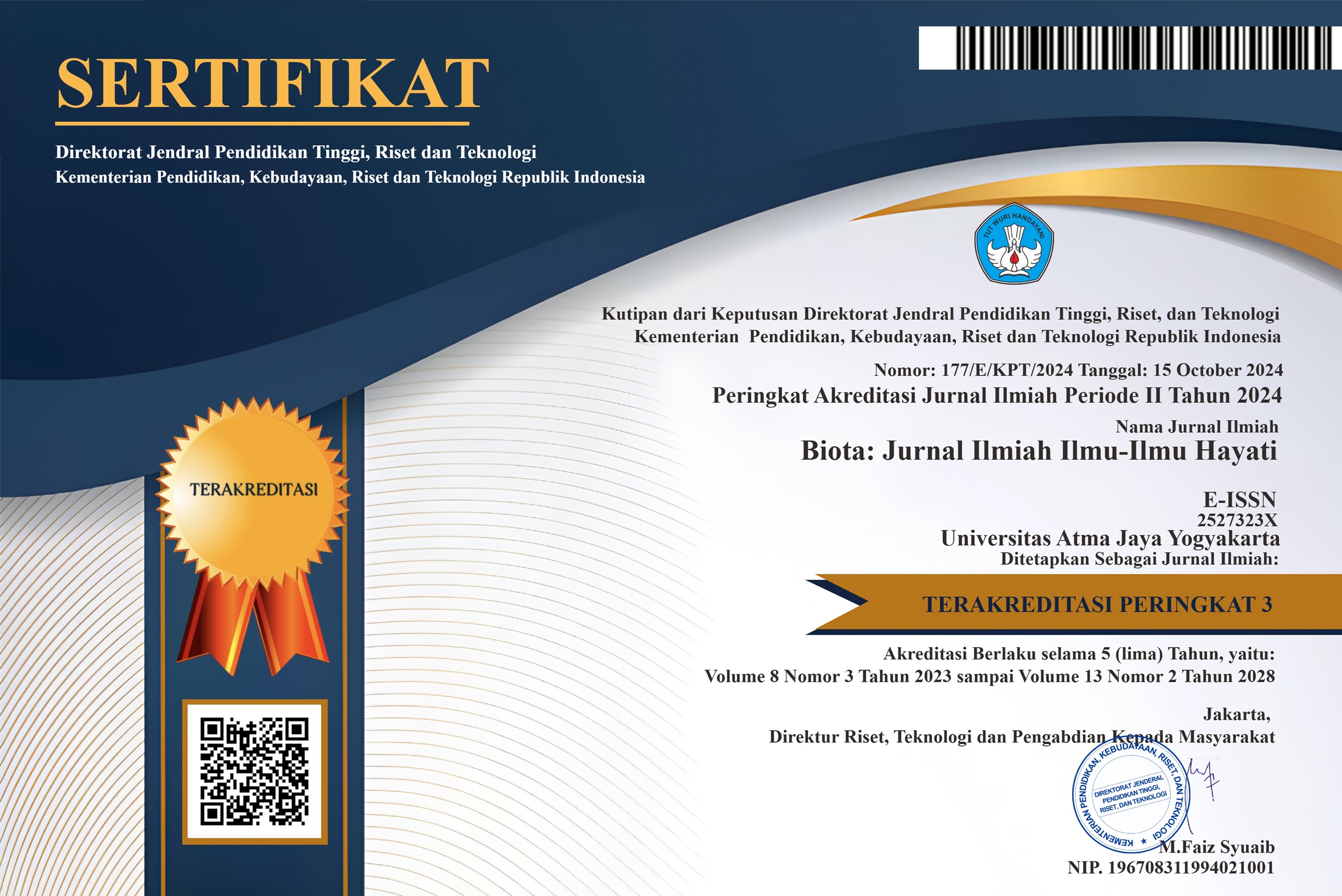Keanekaragaman Laba-laba Pada Pertanaman Jambu Mete Monokultur dan Polikultur di Lombok Utara
DOI:
https://doi.org/10.24002/biota.v15i3.2589Keywords:
Cashew plantation, monoculture, polyculture, spiderAbstract
Agricultural practice is suspected to influence the availability of spiders in cashew plantation. The aim of this research was to study the diversity of spider in two different agricultural practices: monoculture and polyculture. The research was conducted in cashew plantations in Desa Kayangan (monoculture) and Desa Salut (polyculture), Lombok Utara. Two trapping techniques were used to sample the spiders: sweep net and pitfall trap. In each study area, 10 sampling sites were selected along line transect that was 5000 meters long. The study found 36 species of spiders from 12 families. The diversity and richness of spiders were higher in the polyculture cashew plantation than that in monoculture. Habitat structure was more complex in the polyculture cashew plantation; hence many species of spiders were able to coexist there.Downloads
Published
15-10-2019
How to Cite
Suana, I. W., & Haryanto, H. (2019). Keanekaragaman Laba-laba Pada Pertanaman Jambu Mete Monokultur dan Polikultur di Lombok Utara. Biota : Jurnal Ilmiah Ilmu-Ilmu Hayati, 15(3), 348–353. https://doi.org/10.24002/biota.v15i3.2589
Issue
Section
Articles
License
Authors who publish with Biota : Jurnal Ilmiah Ilmu-Ilmu Hayati agree to the following terms:
- Authors retain copyright and grant the Biota : Jurnal Ilmiah Ilmu-Ilmu Hayati right of first publication. Licensed under a Creative Commons Attribution-NonCommercial 4.0 International License that allows others to share the work with an acknowledgment of the work's authorship and initial publication in this journal.
- Authors are able to enter into separate, additional contractual arrangements for the non-exclusive distribution of the journal's published version of the work (e.g., post it to an institutional repository or publish it in a book), with an acknowledgment of its initial publication in Biota : Jurnal Ilmiah Ilmu-Ilmu Hayati, and as long as Author is not used for commercial purposes.












